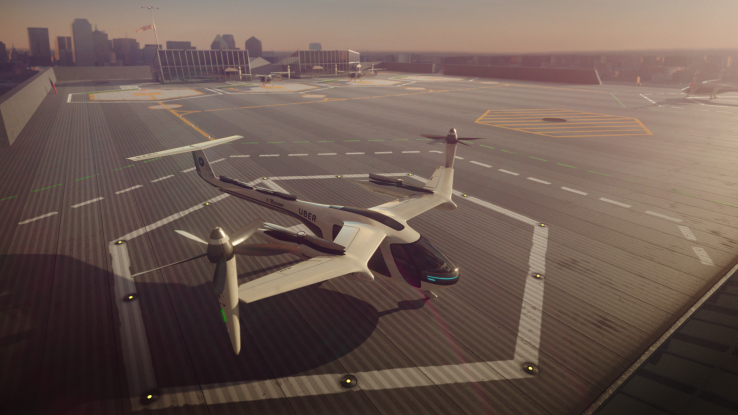The well-known private transport network unveiled its plans to launch uberAIR at the second edition of the Uber Elevate Summit in Los Angeles. Uber presented several prototypes of flying vehicles it hopes to use in the near future to literally raise its business to the heavens.
Uber’s future network of flying vehicles won’t be manufactured by the company itself. However, it will actively partner with industry leaders to produce the vertical takeoff and landing (VTOL) aircrafts that will eventually be used by uberAIR.
Karen Aircraft Inc. will work on the project by developing the VTOL models, while the team at E-One Moli will produce the battery packs. A new prototype was presented at the Uber Elevate Summit that will be the uberAIR reference model. The aircraft will fly at more than 1000 feet and reach speeds between 240 and 320km/h.
The aircraft’s design includes a set of four electric propellers for safe transition between takeoff and landing in these transcendent manoeuvers, and the propulsion system will dramatically reduce noise levels far below those of existing helicopters on the market.
Uber expects to begin flight demonstrations in Los Angeles in 2020 and commercial flights with all the safety and legal regulations in place around 2023.
Pipistrel’s new concept model, the Alpha Electro, was also unveiled at the event. It’s the world’s first electric plane approved by the Federal Aviation Authorities (FAA) which uses a propulsion system for cruising and vertical takeoffs.
In the context of innovation, Uber and the American Army signed a Cooperative Research and Development Agreement to help create new, quieter rotor systems. This agreement includes joint funding and research development to create the first co-rotating propeller for civil/military use. The new concept has two rotors placed on top of each other that rotate in the same direction, making them considerably quieter than other flying aircrafts.






